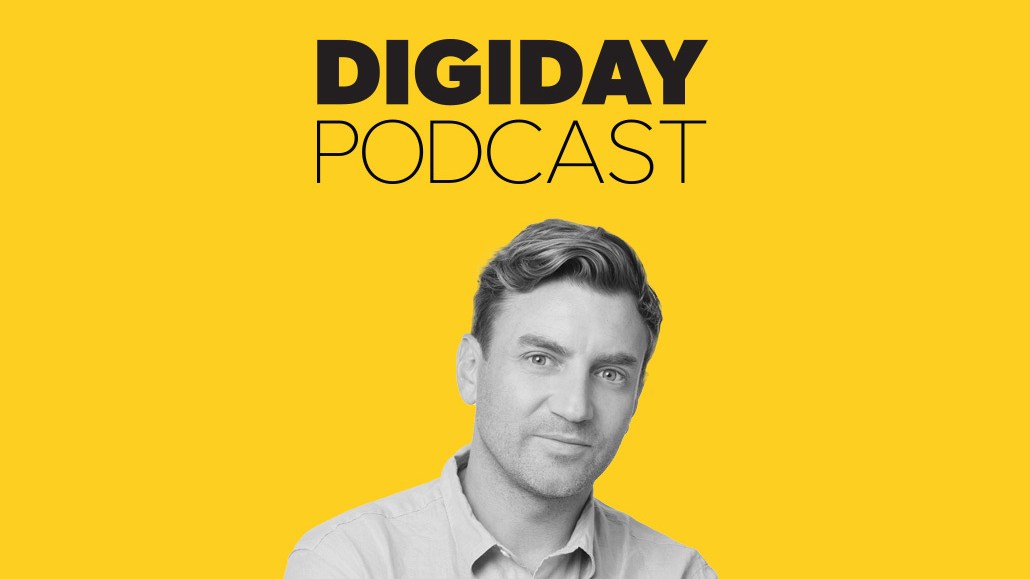Why Bleacher Report’s Bennett Spector is going all-in on live video

Subscribe: Apple Podcasts • Spotify
Sports media was built on live coverage of games, but younger generations are increasingly less interested in watching sporting events as they happen. That doesn’t mean that the live video format isn’t still appealing to this demographic, though.
At least that’s what Bleacher Report’s general manager, Bennett Spector, is finding. Spector’s team spent this past year investing heavily in building a roster of live video content creators ranging from sports enthusiasts to athletes, as well as a wide slate of livestream programming that includes creators’ musings on upcoming trades and their thoughts on teams’ performances for the season.
The monetary appeal is that live video still commands an audience and, therefore, sponsors, Spector argued. But the fact that Bleacher Report’s livestreams are filmed and managed by the creators themselves also saves a lot of money from a production standpoint.
“You can make more money from [longer form video] advertising, but we were challenged with production budgets, because to make video on the internet, you still have to spend a lot of money,” Spector said on the latest episode of the Digiday Podcast. And to make live video a lower production lift, B/R built an in-house streaming tech stack to further eliminate the need for control rooms and technical operations common in broadcast productions.
Now that the technology is in place and the revenue potential is there, Spector talks about how he and his team are actively looking to grow the number of creators in B/R’s network.
Below are highlights of the conversation, which have been lightly edited and condensed for clarity.
A competitive creator program
So we have more creators than are actually streaming on our platform [presently], because maybe their sport hasn’t actually started, but we wanted to hit the ground running come the NBA season, for example. So we have over 1,000 [creators] now that are in our ecosystem, but I think that’s only going to grow. We have very aspirational thoughts that [our network] can double and triple and quadruple over the course of the next year. So we’re ramping up our creator program dramatically. And we have a fund to do that. We’re going to be paying these folks. This isn’t just, ‘Come stream for free.’ We have our own compensation strategy there and it’ll be competitive to what [creators are receiving from] YouTube or Twitch or otherwise.
Determining payment terms
It’s not [a revenue share model] right now. We’re still trying to find what people would say is product market fit. We want to make sure this is the right strategy and so the rev-share components and the sponsorship against it [was] not what was this past year. This past year was about building a foundation and bringing people into our ecosystem and seeing if people even want this content, which I think they do.
Right now, it’s just on a per-stream basis, and we pay people for the hour of the live stream that they do. And again, as you think about that spectrum, maybe [Los Angeles Dodger player] Mookie Betts is paid more than you or I that stream about our [favorite] teams. But it’s competitive to other streaming platforms.
Advertiser appetite for live video
The one thing that’s still working within the TV ecosystem is live sports and live content in general. You can’t really replicate that. And I think advertisers see that if they can get everyone hyper engaged, leaned in and consuming content at the same time, [they] get their very targeted message out. That’s a positive, because it’s increasingly hard to do that. You’re reaching disparate audiences, you don’t necessarily know who that audience is, you don’t know when they’re actually consuming that content. We can focus eyeballs to one place at one time. I wouldn’t say it’s easy, but the beauty of our distribution is that one alert can bring in tens, or hundreds, or thousands of people at one time to consume our content. And advertisers love that.
The CPMs associated with a video are exponential to what you would get [from the display advertising while] reading an article. But we’re also at an infancy stage of it. We built up a great foundation and now we have case studies to take to brands. And that’s what this year has been about. So while we are making a lot more money than we were last year relative to video, our plan is to use that as a case study and a foundation to again, hopefully [have] exponential growth versus more incremental than we’ve had.
More in Media

Digiday+ Research: Publishers’ growing focus on video doesn’t translate to social platforms
Major publishers have made recent investments in vertical video, but that shift is not carrying over to social media platforms.

Technology x humanity: A conversation with Dayforce’s Amy Capellanti-Wolf
Capellanti-Wolf shared insight on everything from navigating AI adoption and combating burnout to rethinking talent strategies.

How The Arena Group is rewriting its commercial playbook for the zero-click era
The company is testing AI-powered content recommendation models to keep readers moving through its network of sites and, in doing so, bump up revenue per session – its core performance metric.








